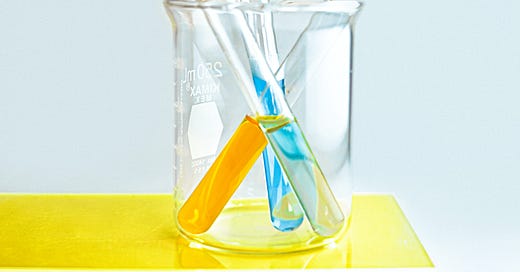Dear Brew enthusiasts,
I am going to cut to the chase. This weeks' episode will be about beer acidity or pH.
A question from another reader prompted me to focus on this topic. For this article, I had to rely upon or draw from my organic chemistry knowledge and literature. Organic chemistry never was my forte, but here we go.
What is pH and why is it important, what factors affect pH and how we can measure it? If you wish to have answers to these questions, read on.

What is pH?
Per definition, pH is a measure that describes the acidity (sourness) or basicity of a solution. The pH scale (which runs from 0 to 14) (inversely) indicates hydrogen ion (H+) levels in a solution. -Log10 transformations of H+ concentration (molarity) is what defined the pH (whereas the -Log10 transformation of OH- (Hydroxide) molarity defines pOH). Higher levels of H+ thus results in a lower pH. Acidic solutions (pH < 7) have a high H+ concentration, whereas basic solutions (pH > 7) have less H+ ions.
Why is pH important?
Beer (or wort) pH is quite vital as it influences a wide range of processes during the brewing process. These include:
Lauterability or the ability of the wort to filter through the grain bed (before you boil)
hot-break formation and hop oil extraction during the boil
foam stability,
The colour of your beer
Beer pH can also affect storage as most microbes don't grow well in an acidic environment. Finally, the pH of your beer drastically impacts how you perceive the flavour of your beer.
What factors affect beer pH?
As you can imagine, various factors affect the pH of your beer. Not least, the presence of microbial contamination. While most brewers go through great lengths to keep out their microbial foes (bacteria), sour beer producers gladly let them join the fermentation party.
Consequently, beer pH is an important parameter that brewers need to take into account. If so, knowing how we can control pH and perhaps, more importantly, how we can measure pH is central to making great beers consistently.
How do we measure pH?
There are several ways to measure the pH of your wort or beer. I have listed some of the standard methods below, followed by some more advanced methodologies or techniques.
Litmus paper. These are colourant-coated paper strips that you can stick in your beer (or wort). The colourant changes colour in a pH-dependent manner. You can compare the hue of your strip to a colour chart and determine the approximate pH of your beer after incubation. Litmus paper tests are straightforward in principle, but their accuracy suffers from product quality and the users' ability to match colours (Note: with my colour blindness, I'd struggle). Fortunately and due to the digital revolution, devices are available to aid in "measuring colour" by image analysis. The best litmus test strategy is to use a high-quality product covering a smaller pH range to reduce error and use a pair of accurate (electronic) eyes.
pH meters. Electronic pH meters are now widely available and are reasonably priced. The pH meter principle rests on the difference in electrical charge. You can already make out the essential components of a pH meter: (1) a sensor that can translate pH to Voltage and (2) a meter that measures this Voltage. As you will know, acidity describes the level of H+ ions in the solution. When you stick one electrode in a neutral solution (pH = 7) and the other in your beer (with an unknown pH), the difference in H+ content will cause a difference in charge between electrode. This difference (expressed in Voltage) therefore depends on pH. To correctly translate Voltage into a pH value, calibration is essential. In this process, you use solutions (with a known pH) to "learn" the pH meter which Voltage corresponds to pH. With a little bit of training and a decent kit, pH meters are easy to use as long as they are calibrated and cared for properly.
Titration. Perhaps the most complicated and analytical way of determining pH uses either indicator compounds that (much like the colourants on litmus paper) change colour when a solution becomes basic or acidic. The alternative (and the way I used to do it) is to measure pH with a pH meter, connected to a computer (to generate curves as you go). By adding either a strong acid or base solution and observing the rate of pH change, one can calculate the concentration of acids (or bases) in your beer. Because beer is a complex mix of multiple (weak) acids, interpretation of the titration curves can be challenging, but once you get the hang of it, it becomes straight forward.
As always, there is a lot more to cover on pH. There are some really cool new technologies out there. These include the use of fluorescent dyes and spectrophotometry. Their use in beer making is yet unclear. I may post about this in future articles.
But for now, I wish you a very good weekend.
Cheers!
Edgar, at The Beerologist



